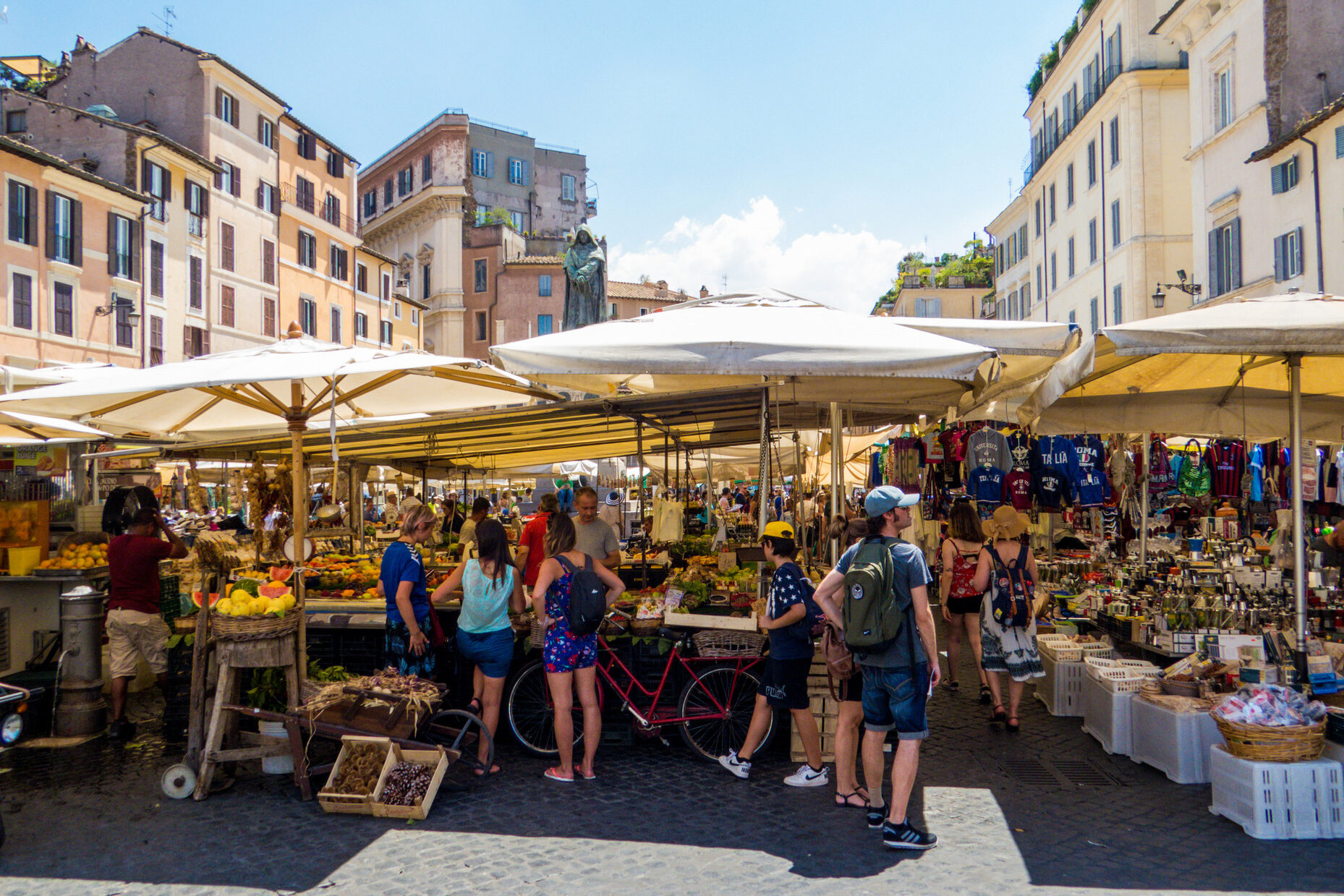After eighteen books of poems, two national book awards, and an outstanding Community Service in Literature award, Maria Gillan has reinvented herself as a painter. The Girls in the Chartreuse Jackets is a collection of her poems accompanied by her expressive water color and mixed media paintings.
Her poems are on familiar themes that run throughout her poetry: growing up Italian in New Jersey at mid-century, family, women’s roles, marriage, mortality, and love. The glue that holds the paintings and the poems together is Gillan’s ever-evolving imagination. Two years ago when she was in California on a reading tour, she explained to me and Carole, my wife, over dinner one evening that she had begun painting again, after a hiatus of many years. At first she said she felt tentative working in a new art form, until someone said to her, “Just paint what you feel, the way you write your poems.”
In one of her poems she writes about an old family photograph of herself and her two siblings. There she is, she writes “my eyes wide open and sparkling. I’m not pretty, but I look / electric, like I can’t wait to move, to get on with it, my energy / palpable even in a photograph.” That’s the sense that I had when I began turning the pages of The Girls: that I was in the presence of a poet and now an artist overflowing with energy and who is naturally compelled to create, to keep getting on with it no matter where the heart takes her. The cover of the book
There is a synergy between her impressionistic paintings and poems. The facial expressions, especially their eyes, of the many women in the paintings tell a similar story to that in the poems. In the Seventh Grade, the chartreuse jacket becomes one of those American signs that Gillan, as the dark-skinned Italian school girl from New Jersey, believed would transform her into a real American girl, making her sexy and attractive to those boys in leather jackets who hung out on Paterson’s street corners.
She describes Paterson where she grew up as the city of dreams, where the immigrant children who lived there dreamed one day of rising above their poor, working-class neighborhood. In The City of Dreams: Paterson, NJ, as a famous poet, she returns to give a reading.
She is confronted by her own mortality when an old friend shows up for the reading. Gillan does not recognize him. Time had not been kind to him. But Gillan’s imagination resists the onslaught of time. “In the city of dreams,” she writes, “no one dies.” In her imagination, nothing has changed: somewhere out of sight she imagines that children are still playing in the streets and Zio’s tomato plants are still growing. The poem is reminiscent of her painting of the three blond-haired Women with Starry Eyes and another Girls Playing Dress-up, bright-eyed dreamers forever reinventing themselves.
As a girl, Gillan writes in Cheap Shoes that her mother made her wear those clunky Buster Brown shoes instead of the “ballerina slippers” that all the other girls wore at school. Her mother reasoned that they had more support and were better for her feet. In her immigrant household, practicality would always trump personal wishes. But as a thoughtful, now successful adult, Gillan does not fault her mother.
In My Mother’s Tough Love, her mother would come to her house when Gillan was at work and clean and wash. Her mother was appalled that so much has changed in society with her working daughter that she now leaves her house and clothing in such disarray. Never resentful, Gillan understood the source of her mother’s criticism. But what could she do? When she went to her mother’s house, her mother offered her food and coffee, and she sat silently holding her mother’s hand. Her mother would tell her, “Cry, cry, it will be good for you.” In the watercolor Woman in Emerald Dress, the dark-haired woman appears dignified and composed, the pensive gaze of her firm blue eyes suggesting that she is someone who has an understanding of experience, both of what is gained and lost in a successful life.
Next to the painting, in The First Time I got Drunk, is the opposite Gillan, a careless young woman who is beguiled by a handsome young man at a bar one night and has too many whiskey sours. She remembers little of the night, not even the boy’s name. The persona’s shameful behavior contrasts with that sheltered school girl from Paterson, who wanted so dearly to be sexy, but did not seem to understand the perils of growing up and away from that cloistered Italian American household with its rigid boundaries, especially for women. The women in her paintings, with their thoughtful faces and always expressive eyes, all seem to understand the complexity of growing older, from Pensive Woman with Roses, Women in Japanese Robes, to Woman at a Garden Party and Forties Woman. They are mature, thoughtful women engaged in life.
But there is more than cautionary warnings in Gillan’s poems and the paintings. Though as a professional she has moved beyond that working-class home where she grew up, her persona in her poems always in some form honors her mother’s generation. From the outset of her career as a poet, Gillan has always in some form celebrated her girlhood in Paterson, regardless of the humiliation that she sometimes faced as the Italian American other among her classmates. In We Used to Play Scrabble, Gillan writes, “I remember those evenings sweet and perfect.” In Jersey Dinners, she writes lamentably that “only from a distance do we know how protected / we were, how we’d mourn the passage of time.” The passage of time includes as well the death of her husband from Parkingson’s disease.
But despite the sense of loss that runs consistently throughout her poetry, the conflict between that Italian American life in Paterson and her successful, modern self has always been the well-spring of Gillan’s creativity.
In My Granddaughter at Nineteen, her granddaughter, who significantly likes to wear “vintage clothing, on the “exterior” is both “cool and fun,” but on the “interior” is serious, to the point of alienating young men at college. Somehow the thoughtfulness of the grandmother and great grandmother has been mysteriously transferred to the granddaughter. The past is present, but in an altered, creative form: that vintage clothing.
In the paintings, Women Around the Kitchen Table, Women and Doves, Women with Starry Eyes, Woman with Pink Dress and Flowers, and Woman in Blue Hat and Butterflies, there is a celebration of womanhood, their collectivity and connectivity.
In My Mother Had No Cookbooks, she writes of her return to her mother’s village in Southern Italy, San Mauro, where there she finds the same dishes that her mother prepared in Paterson: “Ah, my mother was an artist, San Mauro in each movement / of hands, San Mauro in homemade bread, San Mauro in polenta / steaming in its bowl, San Mauro in stuffed artichokes, San Mauro in ragù with tomatoes she canned each summer. . . .” She celebrates her connection to her Southern Italian heritage that has always been present in her life through her mother’s artistry in the kitchen, a creativity impossible to reproduce, certainly not in a cookbook.
The Girls in the Chartreuse Jackets is a celebration in poems and paintings, in words and colors, of women’s lives, not their social roles but their less obvious interior lives, their compassion, empathy, humanity, and even ambivalence. In Gillan’s poems, the passage of time is at best problematic, but a look back at her past reveals the community of immigrant women who made her success possible. Boundaries were never barriers, not when the imagination is set free. Gillan just writes and paints what she feels.
Ken Scambray latest book is Queen Calafia’s Paradise: California and the Italian American Novel. He is also the author A Varied Harvest: The Life and Works of Henry Blake Fuller, The North American Italian Renaissance: Italian Writing in America and Canada, and Surface Roots: Stories.






























